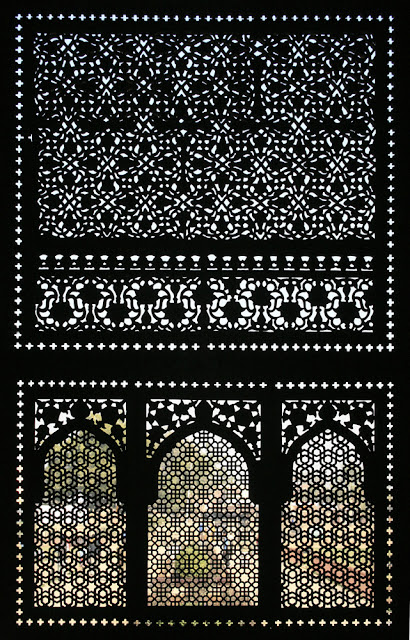Raja Man Singh was a great lover of music and had instituted multiple learning centers for Indian classical music. He patronized various masters of classical music and “Gwalior Gharana” flourished during this period. It is believed that 16 of the 36 singers of Emperor Akbar’s court, as named in Aine-Akbari, came from Gwalior, including the legendary musician Mian Tansen – the most famous musician at the court of Akbar. Regarded as one of the treasured “nine jewels” of the court, Tansen was an exponent of the Dhrupad. Legend has it that by the intense allure of his mellifluous voice - Tansen could make thunderclouds appear, followed by rain. His ragas (melodies) caused lamps to light up and held animals and birds spellbound.
Tansen, was born a Hindu, named Ramtanu Pandey, but later converted to Islam under the influence of his music guru, Mohammed Ghaus. The name Tansen was given to him by Man Singh, and much later Akbar conferred the honorific title of “Mian” on him. Tansen, is considered the greatest singer-musician ever born in India. Young Tansen was one of Man Singh’s court musicians and learnt and practiced music with Man Singh’s gujri wife Mrignayani who herself was a music lover. He became part of Akbar’s court when he was around 60 years of age and for rest of his life enriched Indian classical music with his prolific work, creating music that is regarded in highest esteem even today. Several of his raga compositions have become mainstays of the Hindustani tradition, and these are often prefaced with Mian ki ("of the Mian"), e.g. Mian ki Todi, Mian ki Malhar, Mian ki Mand, Mian ka Sarang; in addition he is the creator of major ragas like Darbari Kanada, Darbari Todi, and Rageshwari.
The sufi saint Mohammed Ghaus, was not only Tansen’s music guru but also his parent’s spiritual master. It is believed that Mohammed Ghaus helped Babur annex the Gwalior Fort. According to local folk lore, he also granted the boon of a son to Tansen’s parents, and is therefore venerated as Tansen’s janma daata (the giver of life). According to another version, Mohammad Ghaus was an Afghan prince. Whatever be the truth, his mazaar (tomb) suggests that he was a man held in great esteem. The tomb is made very close to the eastern gate to the Fort, designed in the typical Mughal style, and is a grand structure that arrests one’s attention. The path leading to it is flanked by a garden decorated with roses and other flowers.
Built in the late 16th century, the tomb is square-shaped built with stone, with huge towers which are crowned by small domes. The building is enclosed on all sides by delicately carved filigree in stone, over which rises a large dome – once inlaid with blue tiles. The tomb is a pilgrimage centre for both the Hindus and the Muslims. The structure is an amazing architectural masterpiece and is made of huge walls with “jali”, or the filigree, work in all its intricacies and glory.
Its amazing to see filigree as intricate and delicate as a lace, but actually carved in stone. The “jali” work on stone walls is a contribution of Gwalior to other parts in north India.
Its amazing to see filigree as intricate and delicate as a lace, but actually carved in stone. The “jali” work on stone walls is a contribution of Gwalior to other parts in north India.
Right next to the tomb of Mohammad Ghaus is the mazaar (tomb) of the simple and humble mazaar of Tansen, lying in piece next to his Master.

















No comments:
Post a Comment
your comments are always welcome.